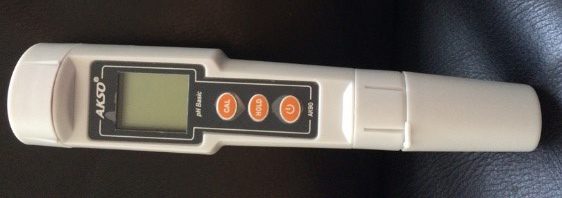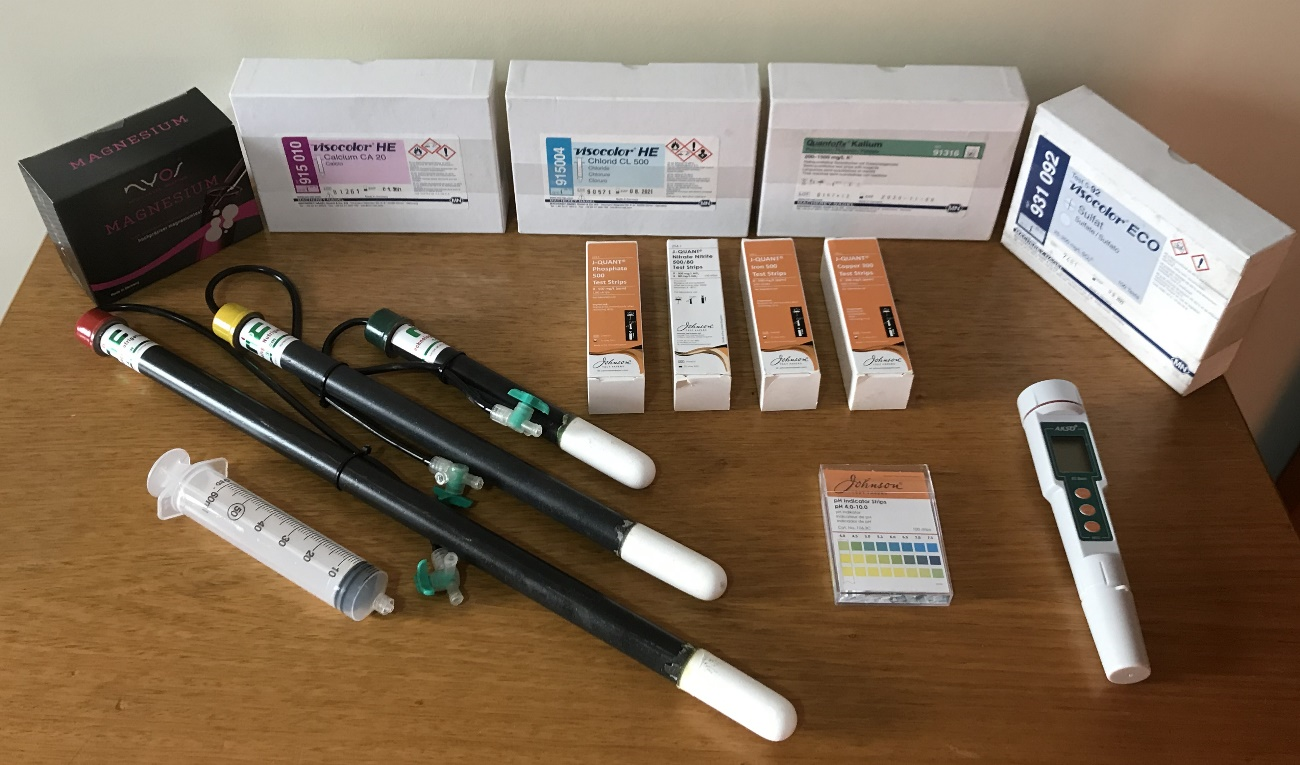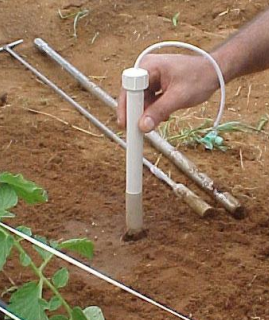Luiz Dimenstein wrote this article for AgriBrasilis to discuss his experience handling fertigation and new technologies on the market.
The application of fertilizers through irrigation allows plants to receive nutrients from water in small and frequent amounts. This has advantages: fertilizers are better available for crops and you can readjust applications during cultivation, which is not possible with the use of solid fertilizers.

Luiz Dimenstein is consultant for Fertirrigar Consultoria e Comércio and for the development of new special fertilizers for ADOB – Poland. Dimenstein holds a Master’s degree from the Faculty of Agriculture in Rehovot of the Hebrew University of Jerusalem, Israel. He worked in Israel with consultancy activities in fertigation, and also at Haifa Chemicals and ICL Fertilizantes Especiais.
There are two criteria used for fertigation: quantitative, the most popular, with doses in kg/hectare, while the other, more efficient criterion uses concentrations and doses in g/m3, based on soluble fertilizer concentrations for each m3 of irrigated water (1m3 = 1000 liters).
In Brazil, we are still influenced from rainfed agriculture (without irrigation) to only complement via fertigation with soluble fertilizers. Not the most efficient agronomic option. Quantities are often applied as a package of recommendations, or as “cake recipes”.
Better to adopt fertilizer concentration criteria proportional to the volume of irrigated water in g/m3, or ppm – part per million, to estimate adequate concentrations of nutrients in the soil solution. Example: N between 150 to 300 ppm; K between 200 to 500ppm; Ca between 60 to 100ppm; etc.
A list of over 120 different crops with desired parameters in soil solution can be found in Fertigation Management – Golden Rule of Fertigation – Dimenstein, 2019.
Golden Rule of Fertigation: 100g/m3 converts % of the nutrient in the fertilizer into ppm.
Example with Urea (45% N): applying 100g for each1m3 of irrigated water, we will apply 45ppm of N. Thus, using an irrigation volume of 40m3 and keeping the dose of 100g/m3, 100g x 40m3 = 4kg of Urea will be applied. In the irrigation emitter, 45ppm of N will be applied. Proportionally, doubling the Golden Rule to 200g/m3, 200g x 40m3 = 8kg of Urea will be applied, and in the emitter the application would have a concentration of 90ppm of N. The irrigation volume may be different from the 40m3 in the example, but the proportion per m3 is the key to management. This applies to any soluble fertilizer.

Portable digital conductivity meter for measuring salinity
The concentration of fertilizers dissolved in water generates salinity, measured by conductivity meter. Each culture has its tolerance level, usually between electrical conductivity (EC) ranges of 1 to 3 mS/cm. Optimal fertigation management aims to keep EC within proper range and adjust nutrient sources to form a balanced solution.
Vacuum Suction Tubes – Soil Solution Extractors (ESS) – collect samples from irrigated fields for analysis with quick, easy-to-handle kits. They identify nutritional levels available at the roots. The tubes direct adjustments in the following doses of fertigations.

Soil solution extractors that use vacuum suction
The following fast kits are available: Nitrate & Nitrite, Phosphate, Potassium, Calcium, Magnesium, Sulphate, Chloride, Iron and Copper, besides pH tape and conductivity meter.
All crops irrigated with localized irrigation systems (drip and microsprinkler) as well as pivots and sprinklers can perform fertigation.
In Brazil, around 7 million hectares are irrigated and 3 million are suitable for fertigation in a pressurized system. However, 70% of this is still dominated by conventional fertilization, where irrigation plays only the role of water demand, or with some complement via fertigation. There is lack of qualified labor to handle fertigation at a professional level. Training in agricultural and agronomy technical courses is focused on rainfed agriculture. When it comes to irrigation, only the hydraulic and water part is emphasized.
 Irrigation grows between 6% and 8% per year in Brazil, with strong expansion in the fruit and vegetable sectors. However, the success of irrigation in Sugarcane, Cotton, Soybeans, Corn and Coffee opens a larger market for these extensive crops. Productivities jump to levels 2x to 5x the dryland averages. Fertigation is the key to efficiency, quality, and productivity.
Irrigation grows between 6% and 8% per year in Brazil, with strong expansion in the fruit and vegetable sectors. However, the success of irrigation in Sugarcane, Cotton, Soybeans, Corn and Coffee opens a larger market for these extensive crops. Productivities jump to levels 2x to 5x the dryland averages. Fertigation is the key to efficiency, quality, and productivity.
Brazilian farmers are resilient. Agriculture is encouraged in the developed world with tax exemptions, bonuses and subsidies. In Brazil, there are taxes on irrigation equipment between 15% and 35%. In plastics, 70% of taxes are applied on plastic films, mulching to cover flower beds and accessories in general. Micronutrients are classified as chemical products and collect PIS/COFINS instead of classifying them as fertilizers that do not pay these taxes. The sector is disorganized and costs are cruel. The media praises the good results with strong marketing, but the success occurs because commodities and export exchange helped. The weak point is still productivity. Professionally managed fertigation will make all the difference even in times of crisis.
There is a new trend in using buried dripping (subsurface) for extensive traditional crops such as soybeans, corn, cotton, and sugarcane, as well as perennial crops such as coffee, citrus and fruits. Fertigation is more efficient and economical because there is good water savings, between 20% and 25%, due to low evaporation. Nutrition is proportional to volume, so there is also savings in fertilizers.
All crops can take full or partial fertigation: In full fertigation, conventional foundation fertilization and cover fertilization are waived, and 100% of fertilizers com through fertigation. In partial fertigation, only complements are applied. Total fertigation is much more efficient and cheap. It’s a management issue.
An example: phosphorus conventionally used as foundation fertilizer has low solubility and is easily immobilized in the soil. That’s why doses are very high, ranging from 2 to 4 tons per hectare in general. In addition, there is the cost of input, operating, fuel, labor for applications in large areas. On the other hand, fertilizers with fully soluble P can be applied frequently and in mild doses, totaling between 100 to 150 kg of soluble phosphate fertilizers per hectare and making this nutrient available and costing up to 70% less.
Another innovation for P absorption efficiency is an application of Mycorrhizae that increases 4x to 5x the phosphate absorption capacity and helps in the absorption of other nutrients. The common version is called Rootella F, a powder for seed treatment. The novelty is Rootella X, which can be diluted in water and applied via irrigation. 40g/hectare is enough for the efficiency of the roots to increase a lot. The high concentration of Mycorrhizae with a longevity of up to 2 years is an Israeli development by Groundwork BioAg. In this case, it is a Bioirrigation because a fungus is applied.
Another innovation is the use of soluble amino acid chains that, upon infiltrating the soil, are converted into chelates and release cations trapped in the soil clays for easy root absorption. Soluble fertilizers enriched with this increase the absorption of nutrients such as Zn, Cu, Fe, Mn, Ca, Mg and K. This additive is called RNA – Release Nutrient Additive. Patent from the Polish chelates company ADOB.
Another Bioirrigation innovation is the application of a yeast in the products PhytoCat (liquid) and Phyto-C3 Organic (soluble powder). Both have organic certification and perform multiple functions such as cleaning the irrigation system, inducing roots to absorb 20% to 30% more solution, and induce formation of chlorophylls and carotenes in the leaves to increase photosynthesis capacity. Developed and patented by researchers at the University of California and the BOC company.

